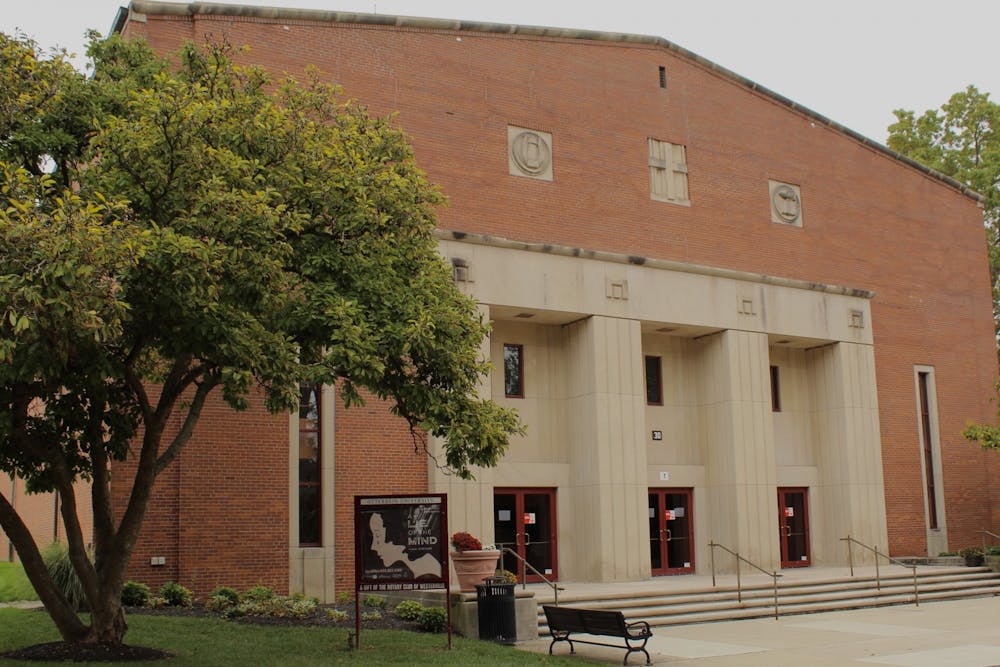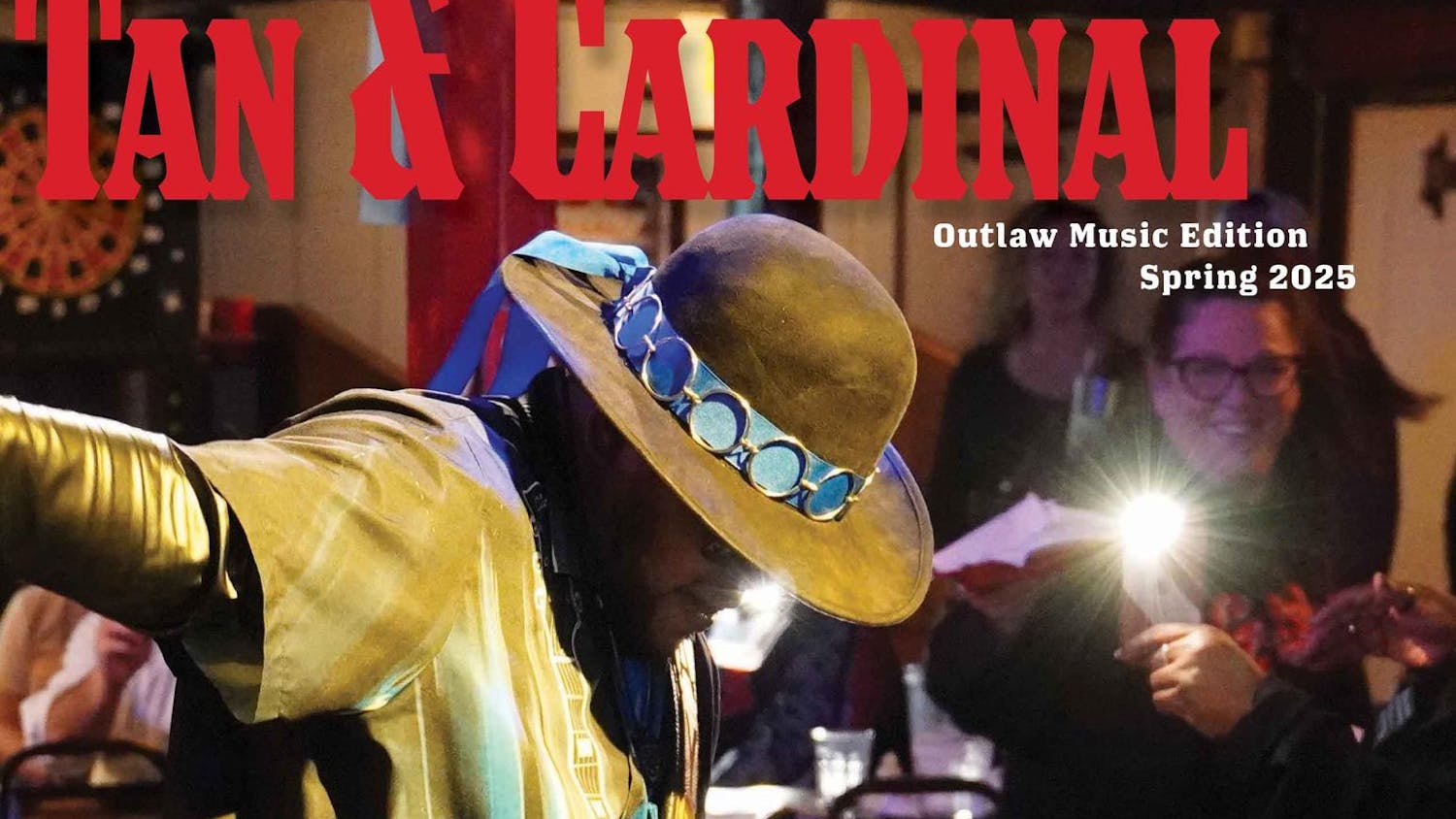(Warning: This article contains mentions of depression and suicide, albeit in the context of an urban legend)
Twyla Tharp shared her name with a famous choreographer, but that was all they shared.
The casting directors agreed that she possessed the ambition and drive necessary to pursue roles in the theater, but they disagreed when it came to her talent. Despite her numerous auditions, she never achieved anything larger than background roles.
Despondent over her continued lack of success, she lingered at Cowan Hall one day until everyone else had left for the evening. Once she was alone, she took to the scenery rigging.
After she reached the top, she looked out over the stage of the auditorium and jumped, falling 30 feet to the stage and dying on impact.
In the months and years to follow, students began to report strange occurrences in Cowan Hall.
Students would hear doors open and shut, crew members would hear disturbances in headset radios and performers would slip on a particular spot on the stage - the spot of Tharp's impact.
The conclusion among university attendees was unanimous - Tharp had returned from beyond the grave to haunt and harass theater personnel out of spite.
Or so the story goes.
Many college campuses play host to their own ghost stories: Ohio University’s is a mental patient, Bowling Green State University’s is a former Chi Omega sorority member, Denison University has a mysterious woman in black, and Otterbein’s is the aforementioned Twyla Tharp.
The story is detailed in Chris Woodyard’s 1994 book “Haunted Ohio III,” which contains a brief section describing the legend and several of the ways Tharp allegedly haunts the theater (it also served as the basis for the opening paragraphs).
But is Tharp’s story true?
We can start to answer this question by establishing a timeline: How long has the legend been around?
Let’s first look at Cowan Hall, since that is where Tharp is said to have taken her life. The building finished construction in 1951 and houses the Fritz Theatre. As for when the legend was first reported, it may initially be tempting to cite Woodyard as the originator, but reports of Tharp date back much further than that.
Although Cowan Hall finished construction in 1951, the first credited report of Tharp's reign on the building can be given to Woodyard. However, reports date back much further than that.
“[My wife and I] definitely heard about the Twyla legend while we were there,” Otterbein alumnus Jacob Snodgrass said. The two of them attended the university from 1988-1992, starting six years before Woodyard published her book.
“However, neither of us experienced anything first hand, nor did anyone else we knew. But it wasn’t for want of trying, because my friends and I broke into Cowan several times in the middle of the night, willing Twyla to show herself...Yet Twyla never seemed as much interested in meeting us as we were in meeting her.”
Going back even further, an October 2011 article published on TandCMedia.org saw former Otterbein professor Edward Vaughan claim that he often heard Tharp's story when he first arrived at Otterbein as a freshman - in 1967.
So the events described in the ghost story could feasibly have happened - except for three significant details.
“There has never been a student named Twyla Tharp to graduate from Otterbein,” Stephen Grinch, Otterbein’s Archivist said. “There is no record of any student killing themselves in Cowan Hall.”
In addition, the tale is widely reported as having happened in the 1930s - which is impossible, seeing as that was two decades before Cowan Hall was built and Otterbein’s theater program established.
Grinch firmly denied that there was any truth to the legend, saying “The fact that it is the name of a well-known choreographer, and the fact that the legend of Twyla has her dramatic death pre-dating the construction of Cowan Hall, leads me to believe that it’s all a campus legend.”
The Westerville Historical Society’s online database corroborates this, as there are zero relevant results for the search terms “Twyla”, “Tharp” or “Twyla Tharp”.
That doesn’t mean that strange things haven’t happened in Cowan Hall.
In “Haunted Ohio III”, Woodyard recounts an event that saw roughly 90 custom lighting cues disappear from the control board about two hours before a performance of “Stepping Out.”
Grinch briefly spoke about other strange events in that October 2011 article: “A friend of mine from undergraduate days remarked that out of nowhere, a noose appeared hanging from the (lights above the stage), and no one had seen it before and it wasn’t set for the stage...Things will be moved and weird noises will happen. Not just building creaks either, but things that cannot be explained.”
So, while the tragic tale of Tharp is untrue, that doesn’t necessarily mean that something isn’t lurking in Cowan Hall. The strange electronic behavior and odd feelings students report may indeed be indicative of paranormal activity - or they could simply be the result of faulty computers and overactive imaginations.
More recently, ghostly phenomena has been reported at a different spot on campus: Dunlap-King (DK) Hall.
“It only plays around,” Fernando Jose-Chairez, an Otterbein junior and RA at DK Hall said. Jose-Chairez was referring to Franklin, the ghost that supposedly haunts DK Hall.
Jose-Chairez said that there isn’t much of a story behind Franklin; it’s someone who lived in the building sometime in the past and elected to stay behind after death. Though background information is scant, accounts of activity in the dormitory aren’t.
“It mostly just moves things and causes noises, but it doesn’t attack people.” Jose-Chairez said.
He went on to describe instances of flickering lights, strange noises, doors shutting on their own, moving furniture, and an overall creepy atmosphere at the dorm. “I sometimes hear my name being said when there’s nobody around, but other than that nothing too major.”
All of these are archetypal examples of paranormal phenomena, but then again they could be symptoms of the building’s age and a sign that it’s time to conduct some repairs. Without more evidence one way or the other, it’s difficult to come to a completely satisfactory conclusion.
It seems that Otterbein’s paranormal pantheon has doubled its membership with Franklin joining the fold. Only time will tell if his legend grows to match (or even surpass) that of Twyla Tharp.








